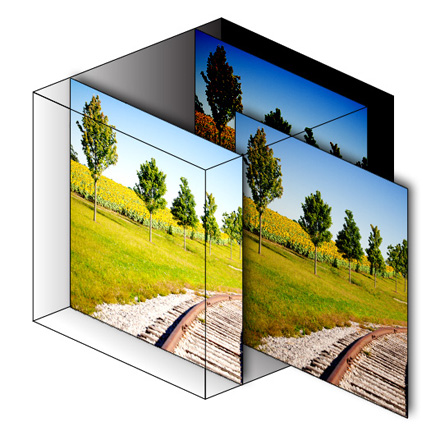Business Travel
I’ve been doing a bit of traveling lately with work. Although I don’t like being away from my wife, I do get excited about seeing parts of the country that I’m not familliar with. No matter what the shoot is for, I can usually sneak away to take a few fun photos just for myself.
We have a division in Alliance, Nebraska. Now you may think you’ve been to the middle of nowhere before, but until you’ve been to Alliance – you haven’t. I was born in Nebraska, and I have family in Nebraska, so I thought I knew what it would be like. But the “panhandle” is worse than Kansas. Anyway, Alliance has a world-famous tourist attraction: Carhenge. It looks just like Stonehenge but, you guessed it, built with cars. I thought it would be a fun spot for an HDR, and I was lucky enough to happen upon it near sunset (just after actually, but it worked out thanks to Lightroom 3’s noise reduction).
More recently, work sent me to Clarksville, TN where we have a big railroad construction job going on. We built a bridge across a creek there, and I was trying to take photos of it. I saw that nearby there were tall stacks of bundled up railroad ties. They were in the perfect spot for me to get some good elevation, and look down on the roadbed we had put across the bridge. So I climed up these tar-covered planks (further ruining my jeans) to get a good shot. It was a great shot of the bridge, but when I was up there I found the ties to be much more interesting. The blackened wood and harsh shadows prompted me to take this as a 3-exposure HDR.
Accidental Captures
I absolutely love it when I’m just goofing around and somehow a cool photo happens. Here I am, sitting at my desk experimenting with Lightroom 3 Beta 2. I was toying with the tethered shooting feature, and I just clicked the shutter release button within the application and the camera went off in my hand. That’s nothing new, right? But it came out with a pretty cool photo (at least, I think so)! It’s ISO 1600 on a little Rebel XTi. You can see that the noise reduction in the new version is going to be AMAZING. Click Here to see the full-size image. I can’t wait for the full version of LR3 to come out!
Lightroom HDR
For Easter weekend, Veronica and I went up to Ohio to hang out with family and friends there. Friday was way too beautiful to spend the car trip with the windows up. It’s fun to see Pita through my side-view mirror enthralled by the ever-changing scenery.
On Saturday we went to the Cincinnati Zoo with our nieces. It was kinda rainy, but I got a couple fun shots anyway like this one of the elephant house. When I was processing this in Lightroom, I pushed up the fill light and the clarity (and a few other adjustments) which gave it an HDR look because I compressed the tonal range. It got me wondering, what is it that qualifies an image as an HDR or a pseudo-HDR? Do you have to use Photomatix or Photoshop? I think that, based on the concept of High Dynamic Range imaging, Lightroom and Adobe Camera RAW can produce Pseudo-HDR images by pushing up Fill Light and Recovery. I’ve seen some debates about this, but it seems like those who disagree don’t fully understand what a RAW file is and how programs like Photomatix only combine JPEGs (or converts RAWs to JPEGs and then combines) to achieve HDR images.
The RAW Format Cube Principle
Midway is a cute little town in Central Kentucky. We have a railroad track that runs right through the middle of downtown, so it has been a popular location for train photo shoots. This is a “Pseudo HDR” of a cute little building there.
I took this photo in RAW format which means that the camera records all the image exposure data coming through the lens without compressing it to a JPEG. I like to describe a RAW file as a cube of image data, whereas a JPEG is a plane within that cube.
Photoshop and Lightroom are used to process RAW files. When you adjust the exposure, you’re essentially moving that plane back and forth within the cube.
This principle relates to HDR photography techniques. Traditionally, a photographer will shoot a scene in JPEG format at several different exposures to create this range of exposure data. Using special software like Photomatix the images can be blended together. But it can also be done using a single RAW file. Essentially, for each pixel in the image the software will search the dynamic range for a midtone and use that exposure setting for that pixel. So in other words, it’s adjusting the exposure for each pixel. With this method, shaded areas are exposed properly and bright areas are exposed properly.
I always shoot in RAW format. I don’t always make HDR images with them, but it’s very practical to be able to tweak exposure and contrast in a way that is more effective than just darkening/lightening pixels. Shooting in RAW has saved my bacon on more than one occasion!








